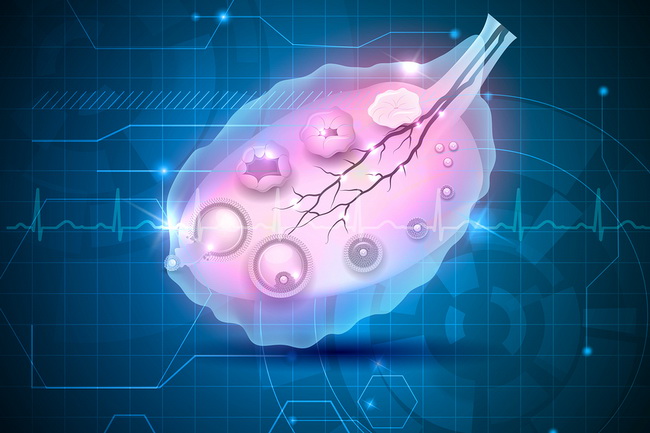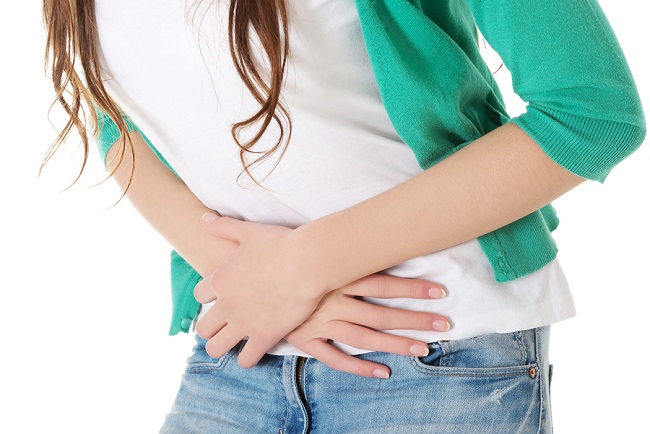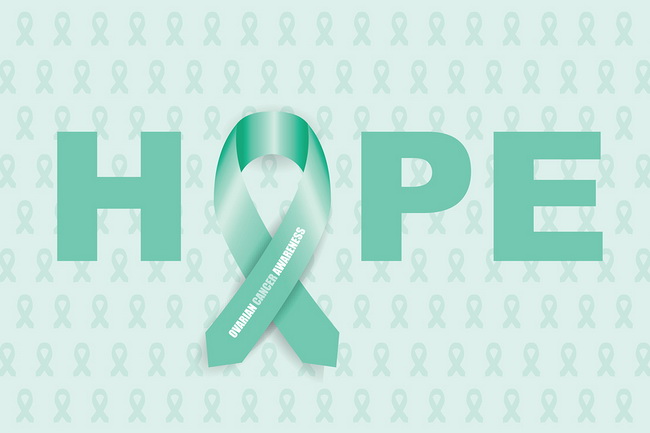- Make It Yourself Lavender Heart-Shaped Bath Bombs!
- 20 Things You Never Knew About “Down There”
- 12 Best Foods For Those Suffering From Arthritis Pain
- 12 Personal Hygiene Mistakes Almost Everyone Makes (Mom Never Told You About #4!)
- 15 Medicinal Plants And Herbs From The Cherokee People
- 12 Mind-Blowing Benefits Of Drinking Coconut Water During Pregnancy
- 12 Outstanding Winter Foods That Won’t Fatten You Up Like A Christmas Turkey
Ovarian Cysts And Ovarian Cancer – The Warnings Signs You Should Never Ignore

Photo credit: bigstock.com
It is virtually impossible for women to forget that they have ovaries. There are those annoying little reminders every month, right? But other than that, most women rarely give their ovaries a second thought — until they have problems such as severe pain or infertility. Women talk a great deal about infertility and ovulation, how to get pregnant, and how not to get pregnant, but how many times do you hear someone talking about the symptoms of ovarian cysts or ovarian cancer? Unless you have had either or someone in your family has, chances are you have no idea what those symptoms might be.
The same is true of ovarian cancer. Because it tends to strike women at a later age, many people think of it as an “older” person’s disease. This isn’t always the case; however, as ovarian cancer tends to go unnoticed for many years before it is finally discovered. Your best protection is to know the warnings signs, and listen to what your body tells you.
First, let’s look at ovarian cysts, since these are more common than ovarian cancer.
What Exactly Is an Ovarian Cyst?
In simple terms, an ovarian cyst is a small sac that fills with fluid either in or on the ovary. Most women have very small ones each month, but they are painless and disappear quickly when ovulation occurs.
There are several types of ovarian cyst and the ones that are painful or that cause complications are the ones most women talk about when discussing cysts. These are what we will look at in this article.
- Endometrioid Cysts – For reasons unknown by scientists, the lining of the uterus in some women begins to grow beyond and outside the uterus, sometimes into the ovaries themselves. Endometrioid cysts, sometimes called endometriomas, are extremely painful, especially during menstruation. These cysts will affect fertility.
- Dermoid Cysts – These cysts are actually benign tumors that usually occur in younger women. These cysts sometimes contain fat, cartilage, skin, or hair. They can be extremely painful and can grow as large as six inches in diameter. These cysts often become inflamed and cause severe abdominal pain.
- Polycystic Ovaries – When follicles fail to open to release eggs, these eggs accumulate on the ovaries. This causes them to enlarge, and often result in a thick outer layer on the ovaries. This thick layer that causes women pain during their periods. Polycystic ovarian syndrome can result in fertility problems and intense pain every month.
- Cystadenoma Cysts – There are two types of cystadenoma cysts. These are sometimes called neoplasms, because new abnormal formations develop from ovarian tissue. One type of cyst, called serous cystadenoma, is filled with a watery fluid and grows between two and six inches in diameter. The other is called mucinous cystadenoma, and this cyst is filled with a thick gelatinous substance and can grow quite large — between six and 12 inches in diameter! There have even been documented cases where the cyst measured 40 inches and weighed more than 100 pounds.
Continue to Page 2

Photo credit: bigstock.com
What Are the Warning Signs?
As we mentioned earlier, most cysts are very small and don’t cause any problems, pain, or have any symptoms at all. They grow quietly, and then deflate each month upon ovulation. However, if you have any of the above cysts, or if your cyst begins to grow quite large and ruptures, you might experience the following:
- Abdominal bloating
- Abdominal pain, such as severe cramps
- Pain during or after sex
- Menstrual changes such as irregular periods or bleeding between periods
- Extreme breast tenderness
- Unexplained weight gain
- Nausea, vomiting, especially when combined with severe cramps
- Pain during bowel movements
- Infertility problems
Although many women experience some cramping and pain during their menstrual cycle, if you have any extreme symptoms such as sharp or severe pelvic pain (consider it severe if even ibuprofen doesn’t make it stop), fever, light-headedness, or dizziness. If there is anything that just doesn’t feel right, or if you feel that your menstrual cycle has changed, see your gynecologist immediately. Also, don’t allow a doctor to dismiss your concerns or pain as “psychosomatic.” If your doctor does not take your symptoms seriously, see another doctor.
Continue to Page 3

Photo credit: bigstock.com
What if it’s Not A Cyst?
Unfortunately, it could be ovarian cancer. About one in every 100 women under the age of 75 develops ovarian cancer in their lifetime. The good news is with early diagnosis, the cure rate is 90 percent! The bad news is that most cases of ovarian cancer are diagnosed too late and the cancer has spread to a much more advanced stage, making it difficult to treat.
What Are The Signs And Symptoms Of Ovarian Cancer?
Researchers from the University of Minnesota reviewed the medical records of 107 women who had ovarian cancer and published their findings in the Mayo Clinic Proceedings. The most common symptoms they found were:
- Cramps and/or abdominal pain for more than 2 weeks
- Incontinence that grew worse over a two or three week period
- Unexplained weight loss
- Changes in bowel habits, such as constipation and diarrhea
- Regular, severe heartburn
- Bloating
- Nausea, vomiting
Continue to Page 4

Photo credit: bigstock.com
Risk Factors For Ovarian Cysts
Although scientists do not yet understand completely why some women form ovarian cysts and others do not, research has identified several risk factors that increase the chances of developing cysts:
- Smoking
- Family history of ovarian, breast, or colorectal cancer
- Presence of the BRCA gene
- Obesity (a body mass index of greater than 20)
- Women who never become pregnant
- Women who did not breastfeed their children
- Certain medications such as fertility drugs or HRT
SEE ALSO: Reduce Your Risk of Ovarian Cysts With These Food Options Infographic
Risk Factors For Ovarian Cancer
- Family history of cancer especially bowel, breast, uterine, or ovarian cancers
- Being between the ages of 40 and 75
- Having no children or only one child
- Never taken birth control pills
- Had or have endometriosis
None of the above risk factors are a guarantee of ovarian cysts or cancer; they are only guidelines to help you decide if you are at a greater risk.
Don’t panic, however. Even if your risk is high, yearly checkups by your doctor and annual CA-125 blood tests can help identify any problems early.
References:





























